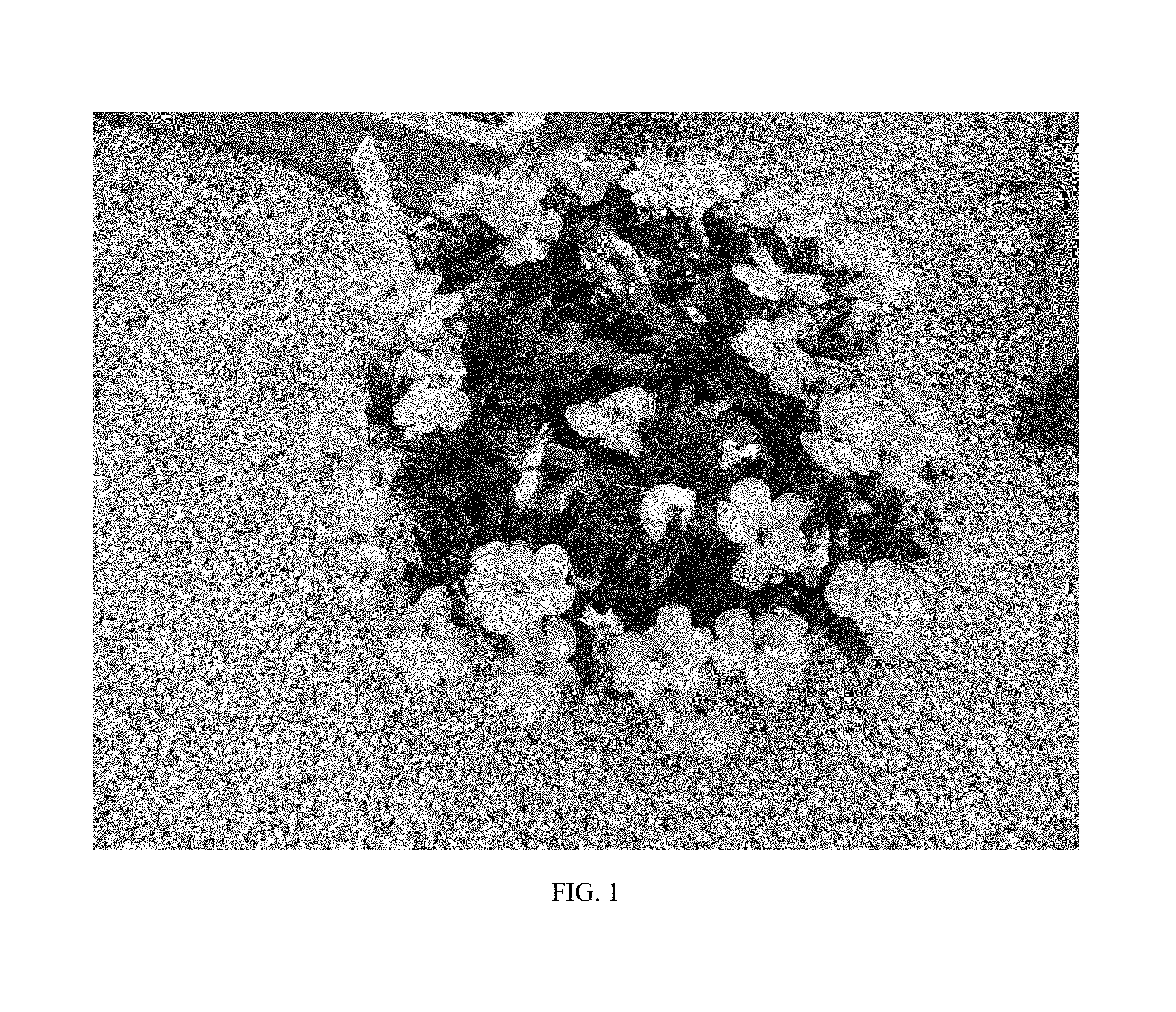U.S. Patent No. 10,149,453 B2 (‘453) issued on December 11, 2018, for “New Guinea Impatiens Variety SAKIMP042.” It was issued to inventors Chihiro Sato and Shinji Minemura, both of Nagano, Japan. The assignee is Sakata Seed Corporation, of Yokohama, Japan, one of the world’s largest vegetable and ornamental seed companies. The one interesting aspect is that this is a utility patent under 35 U.S.C. §101, which protects new and useful methods and compositions of matter, rather than the typical plant patent under 35 U.S.C. §161, which protects new and distinct cultivars of plants. According to the specification, the Latin name is Impatiens intergeneric hybrid (MPEP 1601).
Figure 1 below illustrates the plant ‘SAKIMP042’.

The ‘453 patent also protects various methods of cultivation, according to the specification. As described in the specification, various embodiments are related to tissue culture production through cellular protoplasts from the Inpatiens plant, regenerated cells from the SAKIMP042 plant, plant breeding, F1 seed production, mutation breeding, and gene editing using the Clustered Regularly Interspaced Short Palindromic Repeats (CRISPR/Cas9) technology.
The ‘453 patent’s term is 20 years, and expires on March 30, 2036 (MPEP 2701). The ‘453 patent, however, is subject to a terminal disclaimer under 35 U.S.C. §253 (MPEP 1490) based on U.S. Patent No. PP29,611 (‘611), which also expires on March 30, 2036.
The Cooperative Patent Classification is A01H (new plants or processes for obtaining them; plant reproduction by tissue culture techniques).
Plant patents are a unique type of patents issued by the USPTO, although only a very small number (about 1%) are actually issued each year. Issuances of plant patents, however, are limited to the plant cultivar itself; any protection of methods of cultivation would have to be protected through a utility patent.
Please contact Yonaxis for more information on plant patents, or patents in general, if you have any questions.
